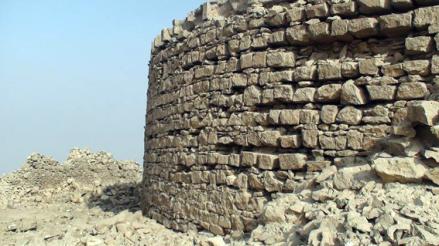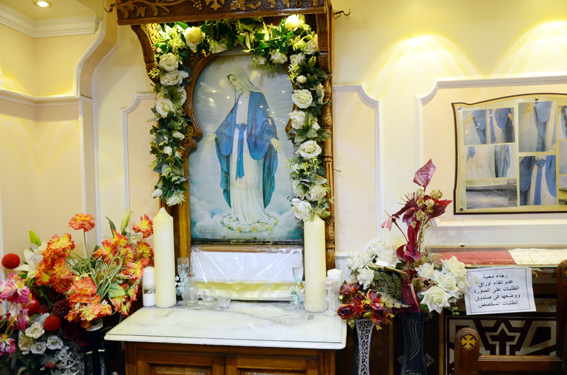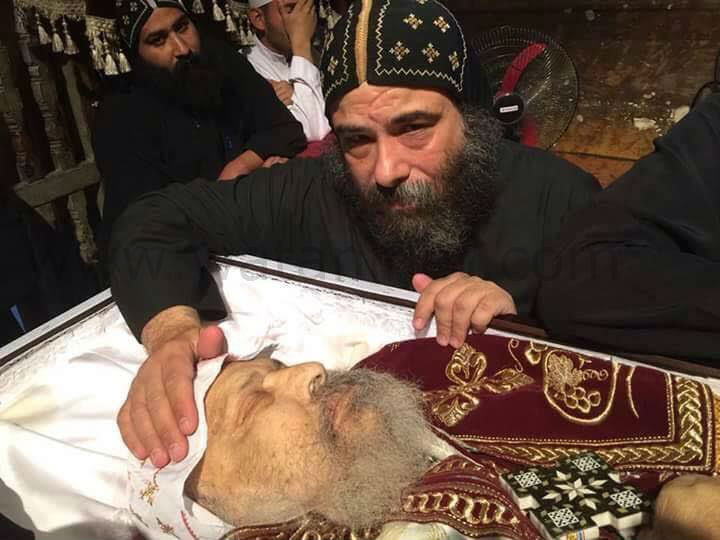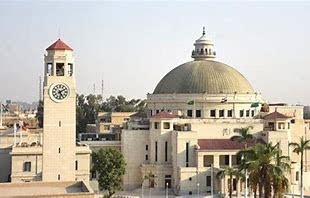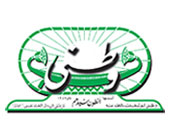The monastery of St Arsanius (St Arsany) the Great, teacher of the children of kings, which dates back to the 5th century and commonly goes under the name the Monastery of the Mule (Deir al-Baghl),
is under serious threat. This precious piece of heritage could disappear forever, the loss being that of the entire human community. This is a call for action to rescue the monastery, which Watani sends out to the Supreme Council for Antiquities and to all bodies interested in the conservation of heritage.
Watani talked to Anba Danial, Bishop of Turah and Maadi, who together with experts and researchers took the initiative of calling for the rescue of the Monastery of the Mule.
.JPG)
The mule
The Monastery of the Mule is located in Turah, in the southern extension of the Muqattam Hills east of Cairo, in an area which holds several old monasteries and convents.
The name of the monastery changed over the years. It was named the Qusair (Small Palace) Monastery since it was built by royal decree. It was also called the Monastery of the Mule, the Hercules Monastery, the St Arsanius Monastery and the Turah Monastery. But the name which stuck to the present day has been the Monastery of the Mule, because a mule used to go to and fro carrying water from the Nile, while a monk waited at either end to fill and empty the buckets.
Atef Awad, an archeologist and professor at the Coptic Studies Institute told Watani of the history of the threatened monastery.
“Turah Hill has been known as an important monastic area from the beginning of the fifth century. Its name was linked to St Arsanius, who came to the area to live as a hermit but, as his presence there and his devoutness gained fame, several hundred monks gathered around him and formed a monastic community, using the many caves in the surrounding hills as cells. The number of monks increased and the Egyptian historian al-Maqrizi (1364 – 1442) says that the caves were so big that just one could house the inhabitants of an entire town. For some six centuries, the Monastery of the Mule was home to an active monastic community. Some historians, however, say that the monastery was established in 412, meaning that it existed before St Arsanius arrived there in 434.”
.JPG)
Favourite place
The area gained fame and became a local tourist destination; al-Maqdesi al-Bashari (947 – 990) mentioned in his book Ahsan al-Takasim lemarefat al-Akaleem (Best Divisions for the knowledge of Regions) that it was a favourite place to celebrate Friday evenings.
In the days of the Tulunids and the Abbasids during the ninth century there was a special guesthouse built for the great army leader Khumarawayh ibn Ahmad ibn Tulun at the top of the monastery on the northeastern side, overlooking the whole monastery. He used it as a rest area on hunting expeditions, and he was alledgedly fascinated by the Coptic icons and spent hours contemplating the icon of St Mary carrying Jesus Christ. Many Muslim writers praised the monastery and the beauty of the building. Great celebrations were held there for St Arsanius on his mulid (commemoration day).
The historian Abul-Makarem described the monastery in 1206 as being surrounded by ten churches. There was a mill in a cave in the hillside, as well as a water well and cisterns to collect rainwater. In 1321, under the Mamluk ruler al-Malik al-Nasir Nasir al-Din Muhammad bin Qalawun (1285–1341), there was an outbreak of sectarian strife and 14 monks belonging to the Byzantine Church, at that time the only monks in the monastery, were burnt alive. At the end of the 14th century and the beginning of the 15th the monastery was totally destroyed.
.jpg)
Visible threat
“I have visited the monastery many times; the first time was 15 years ago and the last was on 22 March 2013 when I was joined by Mr Atef Awad, archeologist Ezzat Habib, and architect Sameh Fayeq, as well as Father Taddaus and Father Abdel-Messih,” Anba Danial told Watani.
“The very real threats to the monastery were visible even as we climbed up to it. The marble workshops underneath the caves could lead to their collapse at any time. At some point we had to stop the cars and walk for about 25 minutes in an unpaved area. There are army camps on top of the hill and at its foot, since the area is of strategic importance. The monastery lies midway between the summit and the base.”
Under the rubble
Dr Habib describes the monastery keep. “Al-Gabarti mentioned in the book Abu-Saleh al-Armani that the keep is shaped as a round tower, even though it is a fact that Coptic keeps are square in shape. This implies that the keep at the Monastery of the Mule was built according to the Byzantine style because it was built by a Byzantine emperor, Arcadius. There is a tower on the edge of the hill, below which are the ruins of buildings. The tower consists of six rooms. On the eastern side of the tower there are ruins of a building suspected to have been Mar-Girgis (St George) Church, which Abul-Makarem said lay outside the gates of the monastery. Or it may have been the guesthouse of the Fatimid ruler al-Hakim Bi’amrellah (985 –1021). There are also two caves, one of which contains some beautiful Coptic inscriptions while the other must have been used as a tomb since it is full of bones. On the south side are some ruined caves. A riverbed divides the hill horizontally from east to west, with dozens of caves on its banks. At the end of the riverbed there is a southern tower similar to the northern one. Finally, it is very clear that the monastery was demolished, and after the rubble is removed a lot of things will be discovered and the whole image will be clearer.”
.JPG)
Valuable papyri
Mr Awad said that in 1941, while some Egyptian labourers working for the British army were cleaning one of the caves to be used as an arms store, they discovered more than 1,000 papyrus sheets, some written in Greek. Five were explanations of the Holy Books written by Didymus the Blind (313 – 398) and two others by Origen Adamantius (182 – 254)—one of them including a debate between the bishops Origen and Heraclitus about the triangulation and human’s soul. There are indications these manuscripts were written in the 6th century and probably belonged to the library of the Qusair Monastery. At that Origen’s opinions were controversial, and he was criticised by the Council of Ephesus in 553 which could be why the sheets were hidden in this cave. Most are now preserved in the Egyptian Museum while a few of them have gone to museums over the world.
In March 1947, a British air force unit in Turah called the Coptic Patriarchate and offered to hand it the English Church in Turah and all its service buildings. These included a clinic, classes, kitchens and food courts on the top of the ancient monastery. However the Coptic Church had to return them three months later because of many incidents of theft by the Bedouin in the area. Protection would have cost the Church a sum that it could not afford at that time.
In 1988 Bishop Anba Samuel al-Suriani paid a visit to the Monastery of the Mule. He was then writing his book Al-Daleel ila Al-Kana’is wal Adyura (The Guide to the Churches and Monasteries), and visited the cave where St Arsanius stayed and found it blocked by marble and stone rubble.
Listing the monastery
“The Church is doing its best to list the Monastery of the Mule as Egyptian heritage,” Sameh Fayeq said, adding that Anba Danial has recommended contacting the ministry of antiquities in this regard, especially since the monastery is surrounded by the military and is close to the cement factory and the marble workshops. Anba Danial and the team of archeologists were able to meet former Minister of Antiquities Ahmed Eissa and explain the problem to him. Mr Eissa formed several committees that inspected the area and issued reports stressing, among other points, the importance of defining the borders of the monastery. So far, however, there has been no progress; and the Church cannot afford the huge funds needed for restoration. Mr Fayeq said that perhaps the Ministry of Antiquities could cooperate with the foreign bodies in Egypt concerned with restoration of heritage, to restore the monastery. It has been proposed that the Aga Khan Fund for Architecture might help. A UNESCO team visited the monastery and issued a comprehensive report on the whole area.
St Arsanius: Teacher of the Children of Kings (350 – 445)
St Arsany was born in Rome in about 350 AD. His parents were wealthy Christians who schooled him in Church matters. He was familiar with Latin, Greek and Christian virtues in general, and became a deacon. When Emperor Theodosius I the Great needed a virtuous, wise man to teach his two children, Onorius and Arcadius, he chose Arsanius.
The teacher was forty years old when he secretly left the palace and all its glory, his rank and all his possessions, to become a monk in Scetis—present-day Wadi Natrun in Egypt’s Western Desert.
As a monk, Arsanius was famous for his taciturnity, even silence; he said: “I spoke and often regretted it, but I never regretted my silence.” It was said that when he lived at the royal palace no-one wore costlier clothes than he did, whereas at the monastery, no one wore poorer clothes than he. He lived to be 97 and died on 21 May 445 at his monastery. Later Theodosius II, the son of Arcadius, built a beautiful church for the teacher of his father in Constantinople and moved the saint’s body there with much pomp in 450.
.jpg)
Watani International
21 May 2014


